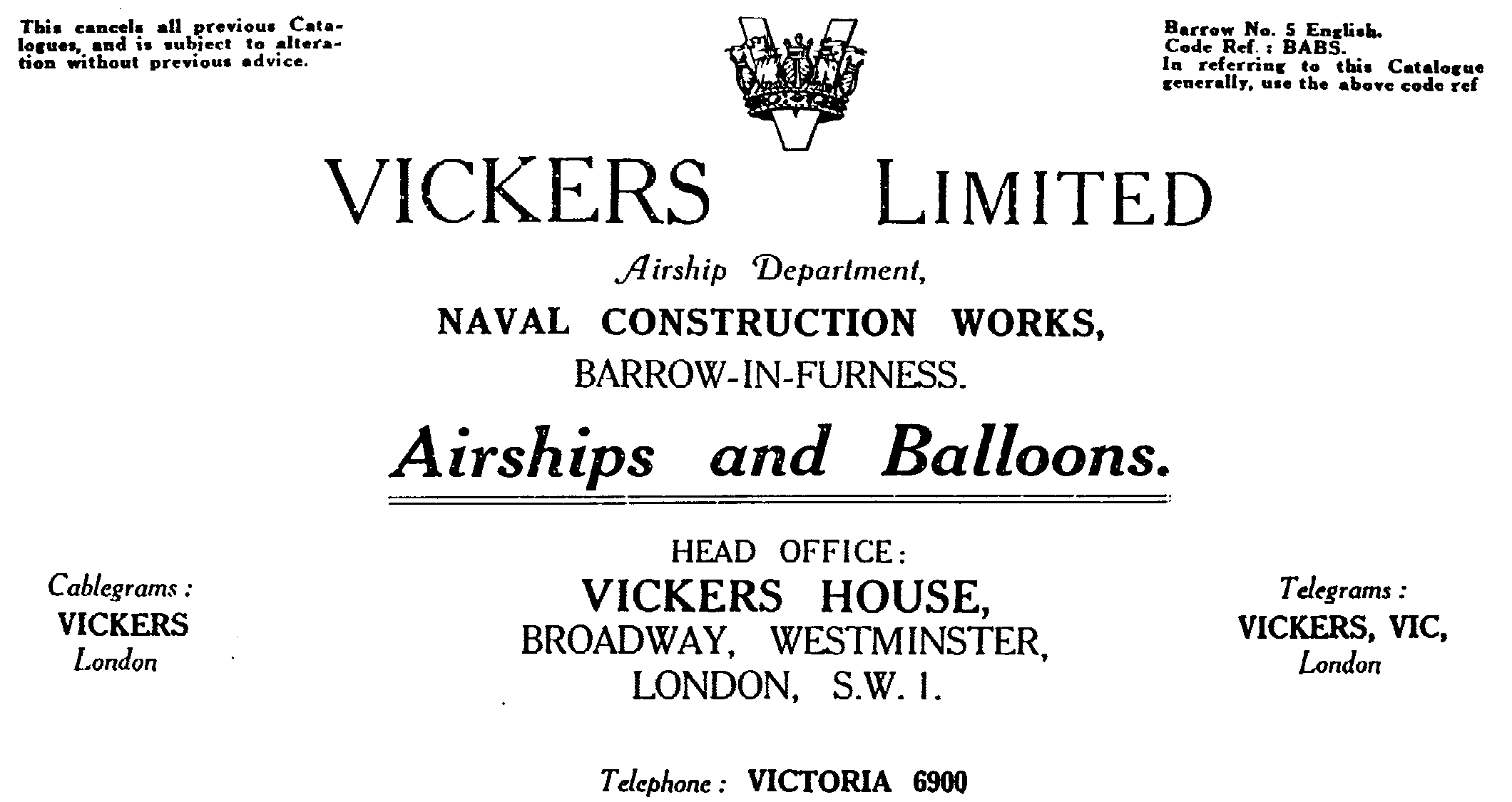The Mayfly and HMA 9r
.jpg)
The Mayfly at Barrow
.jpg)
HMA No 9r in flight.
The first British rigid airship was His Majesty’s Airship No 1 (HMA No 1) or The Mayfly as it was mostly known. The project was financed by the government and in 1909 a contract was awarded to Vickers to build the airship at Barrow. However work was delayed when problems arose constructing a shed large enough to hold the airship and it wasn’t until May 1911 that the ship was ready to be trialed. She was then put back in her shed. On September 24th the same year whilst being brought out of the shed she broke in two and was sadly damaged beyond repair.
Following the failure of The Mayfly in 1911 plans for further airships were abandoned however the programme was revived in 1913 when Vickers began work on HMA No 9r at Barrow. Work was then again suspended in 1914 due to the outbreak of WW1 with many key staff moving away. Later in 1915 due to another change in government policy the project was revived and the ship was finally completed in the summer of 1916. Initially it was unable to meet the required load but following engine replacements and modifications was accepted by the Navy in April 1917. HMA No 9 was the first British rigid to be flown and was designed by H B Pratt and Barnes Wallis.
However by 1917 much progress had been made in airship design so sadly the ship was already considered obsolete on completion and was used for training purposes only at Howden and later mooring experiments at Pulham. The ship was deleted in June 1918. However by 1917 much progress had been made in airship design so sadly the ship was already considered obsolete on completion and was used for training purposes at Howden and later mooring experiments at Pulham. The ship was deleted in June 1918.
Known individuals connected to the Mayfly.

Shown left is a photo taken in later years of Edward Masterman who was Officer Commanding, Naval Section at the time. He went on to have a major influence in testing later airships.

Shown left, supervisor of construction and designated Captain of The Mayfly, Neville Usborne. He went on to fly other non rigids and in 1914 was made Commander of RNAS Kingsnorth and in August 1915 was appointed Inspector Commander of Airships at the Admiralty. His life was sadly cut short in Feb 1916 when he took part in experiments to launch an airplane from the base of an airship.
Some of the crew of HMA 9r.

George Herbert Scott was the Captain of this ship. By 1917 he had already worked on non-rigids at Farnborough, Kingsnorth, Barrow and Anglesey. He went on to captain the R34 on the flight to the US in 1919 and was also on the R100 flight to Canada. He was to lose his life in the R101 crash in 1930.

Rigger George Martin Rampton joined the Royal Flying Corp in 1915 and served in the First World War. He also worked on the R32 and the R101. Sadly he too lost his life when the R101 crashed..

Flight -Sgt Thomas Greenstreet. Worked on No.4 Parseval, No.3 Astra SS Willows, SS4 & 5 Coastal 21. After serving on the R9, he worked in the R23, R31, R36, and was Second Coxswain on the R33. He was Chief coxswain on the R100.

Rigger Corporal R J Burgess joined the airship service in 1916. After serving on the R9 he worked on both the R31 and R32 and then on the R34. He later joined the R100 crew and was part of an advance team of men who sailed to Canada to assist in the arrival of the R100. He is registered as a resident of Shortstown in 1930 and 1931.

Assistant coxswain Thomas Hobbs joined the airship service in March 1915. He had served on P4 (non-rigid) and after HMA No 9 served on airships R31, R23, R24, R25, R36, and R33. He later worked on both the R100 and R101.

Above: Walter Potter joined the RNAS in 1915 and worked on non-rigids. After working on the HMA No 9r he served on HMA 23r and was Asst Cox on the R33. Walter was one of only five survivors of the R38 crash in 1921 but sadly was to lose his life in the R101 crash in Oct 1930.

George Ernest Long joined the RNAS in 1913 and served in non-rigids No.4 Parseval, No.3 Astra SS Willows, SS4 & 5. After HMA No 9r he was attached to rigid airships R23, R31, and R36. He then became Second Coxswain on the R33 and was part of the R33 breakaway crew in 1925. By 1929 he was Chief Coxswain on the R100.

Engineer J S Middleton served with early non rigid airship Eta during 1914-1916 and was part of the team at Kingsnorth involved in the design and construction of Submarine Scout and Coastal Patrol airships. He was later stationed at Longside before joining airships HMA 9r & HMA 24r followed by the R31.

Shown left: Rigger Leslie Moncrieff joined the RNAS in August 1915. He served on the R9 and later on rigids R23, R25, R26, R33, and by 1929 was attached to the R100.
Shown right: Admiralty Overseer for H. M. Rigid Airships, Harold Butler Wynn Evans. Harold was attached to the R9 in 1916. See the biography written by his grand-daughter Christine Dalton in the Notable People Section.
.jpg)
HMA No 9r was designed by H B Pratt and Barnes Wallis and built by Vickers at Barrow.
